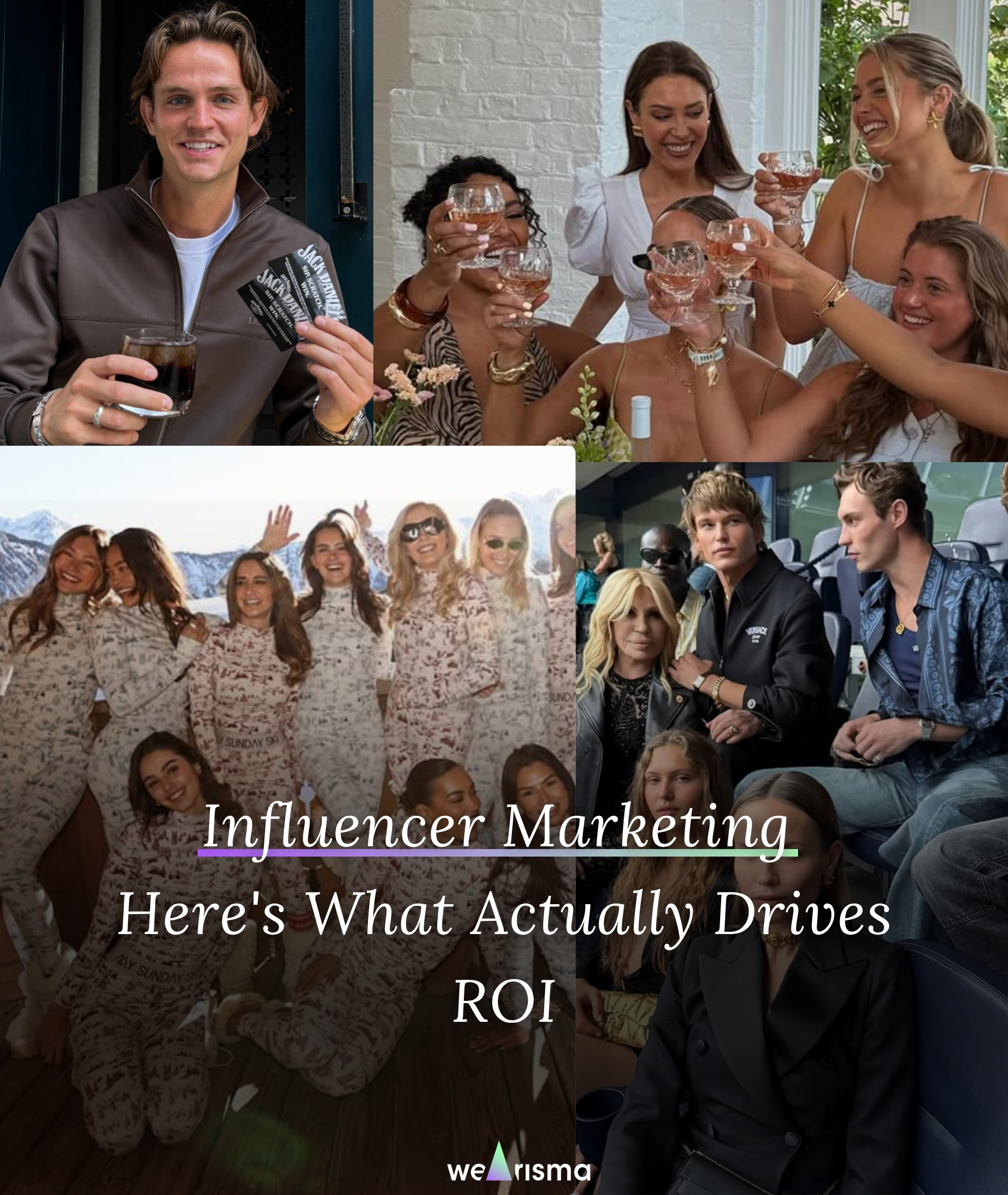🎉 WeArisma joins forces with NielsenIQ (NIQ) to, for the first time ever, measure the impact of Creator Marketing on sales.
To maximize influencer marketing success, brands should track product seeding, host influencer events, and leverage paid campaigns with data-driven insights.

Published On: August 21, 2019
3 Influencer Marketing Best Practices for a Winning Strategy
In this post, Wearisma will provide you with 3 Influencer Marketing Best Practices, necessary for any brand aiming to generate a winning influencer strategy.
With brands investing in Influencer Marketing at an increasing rate, it’s important to make sure that you’re making the highest return possible. For brands just developing an influencer marketing strategy, the process can seem a little daunting. The first step of course would be to select the right influencers for your brand. At Wearisma, we utilise A.I. backed insights paired with human-centered qualitative analyses to provide our clients with the right influencers for their campaigns. However, influencer discovery is just one part of the puzzle. Now that you have picked the right influencers, what are the next steps?

Now that you’ve chosen your influencers, the best way to ensure that they are continually posting on-brand content is by regularly engaging in product seeding. Product seeding or gifting should not be a one off process. Once you have gifted your influencers, you need to track the amount of content they are producing. Then, you need to identify who is and who is not regularly producing high level content featuring your products. Once you have removed under-performing influencers, identify who is promoting your brand organically and input them into the next round of product seeding.
With the help of Wearisma, one cosmetic brand was able to identify 25% of their influencers who were not posting seeded products
Results: these influencers were replaced leading to a 3X engagement increase in 6 months

Creating an influencer focused event is a great way to drive online conversations surrounding your brand. You can foster the creation of high quality content by developing a unique, event-focused hashtag and by encouraging your influencers to post content to their Instagram Stories. Research has shown that nearly 500 million users now use Instagram Stories every day and 1 in 4 Millennials and Gen Z-ers look for Stories of the products and services they want to buy.
Next, you need to use a toolset such as Wearisma StoryVault to track the performance of influencers on Instagram Stories. This data will allow you to determine which influencers should be elevated to a paid campaign.
Results: Building deeper relationships with best performing influencers

Many brands start out by relying solely on organic content to create brand awareness online. Working with influencers more directly by creating a paid campaign will naturally be the next step in your influencer marketing strategy but how do you make sure you get optimum results from your paid campaign? An intelligent influencer platform like Wearisma will enable you to continually identify the best people to work with for your paid campaigns by:
Results: Protect brand equity, increase authentic collaboration
Access timely cultural trends, strategic creator guidance, and industry best practices.
Discover the most groundbreaking entertainment marketing insights from our eye-opening panel discussion at ‘The State of Influence 2025 and future-proof your brand for tomorrow’s creator economy.
Fashion and Sport Brands Global Analysis.
Wimbledon’s evolution into a cultural engine allows brands to move beyond visibility, fostering deeper resonance through tradition, lifestyle, and aspirational storytelling.
In an experience-driven economy, where influence is shaped by shared moments and storytelling, Wimbledon provides a rare opportunity to reach global audiences in a context that extends well beyond sport.


Join our community and get cultural insights, creator strategy guides, and real-world best practices.